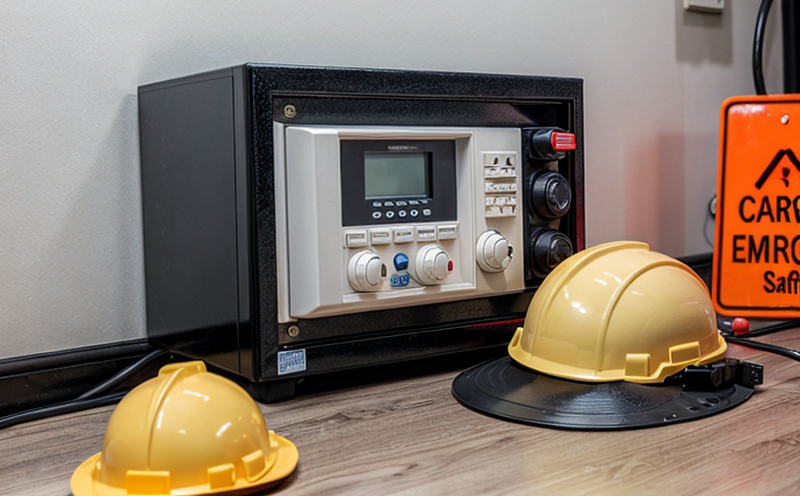ASTM F1477 Ditching Equipment Testing
The ASTM F1477 standard provides a framework for testing emergency flotation systems used in aircraft. This critical safety measure ensures that in the event of an emergency landing in water, passengers and crew have safe means to remain afloat until rescue arrives. The testing procedures outlined by ASTM F1477 are designed to ensure these devices meet stringent performance criteria necessary for aviation safety.
Aerospace & aviation industries place a high premium on safety, especially when it comes to emergency systems. These systems need to be reliable under extreme conditions and must perform flawlessly during critical moments. The ASTM F1477 test is one of the most rigorous assessments available for such equipment. It simulates real-world scenarios where flotation devices are deployed into water. This testing not only validates the functionality but also ensures that the device can withstand the environmental stresses it might encounter.
The testing procedure involves several stages, including assembly and calibration, pre-test checks, actual deployment in a controlled environment, and post-deployment assessments. During these tests, various parameters are monitored to ensure compliance with the standard. These include buoyancy levels, inflation times, and overall integrity of the device. Compliance with ASTM F1477 is crucial for manufacturers as it provides assurance that their products meet industry benchmarks.
The testing process starts with thorough preparation. The equipment must be properly assembled according to manufacturer specifications before any tests are conducted. Calibration ensures all instruments used during testing function correctly and consistently. This step is critical because even minor discrepancies in calibration can lead to inaccurate test results, which could mislead manufacturers into believing their products meet the standard when they do not.
Post-deployment assessments involve detailed evaluations of how well the device performed throughout its deployment cycle. Parameters such as time taken for full inflation and final buoyancy levels are closely monitored. Any deviations from specified limits indicate areas where improvements may be needed in future iterations of the product design. These insights help manufacturers refine their processes continuously, enhancing overall safety standards.
Compliance with ASTM F1477 is not just about meeting regulatory requirements; it's about building trust among consumers and stakeholders within the aviation industry. By adhering to these stringent testing protocols, airlines can demonstrate commitment towards passenger safety, thereby fostering confidence in their services. Manufacturers who comply also benefit from enhanced credibility among buyers seeking reliable products.
Given the high stakes involved in aerospace & aviation safety, compliance with ASTM F1477 is non-negotiable for any manufacturer looking to stay competitive in this sector. Regular adherence ensures continuous improvement and reliability of emergency flotation systems across all aircraft models.
- Calibration: Ensures accurate measurements during testing.
- Deployment: Simulates real-world conditions accurately.
- Evaluation: Provides detailed insights into performance metrics.
Quality and Reliability Assurance
The ASTM F1477 standard emphasizes the importance of quality assurance throughout every stage of product development, manufacturing, and deployment. Ensuring consistent adherence to this standard helps maintain high levels of reliability across all emergency flotation systems used in aviation. Regular audits and inspections are conducted to verify that manufacturers follow best practices consistently.
Quality assurance starts with rigorous training programs for personnel involved directly in the production line. This ensures everyone understands not only what needs to be done but also why it is essential. Proper documentation practices ensure traceability throughout each project lifecycle, allowing quick identification of potential issues early on. Continuous monitoring and feedback loops help identify trends or patterns that could indicate broader problems within specific batches or processes.
Reliability assurance focuses heavily on maintaining consistent performance across all units produced under the same conditions. This includes implementing robust quality control measures during assembly to catch defects before they become embedded into finished products. Implementing fail-safe mechanisms ensures that even if minor errors occur, critical functions continue operating correctly without compromising overall safety.
Manufacturers who prioritize these aspects demonstrate their commitment to providing safe and dependable equipment for use in aviation emergencies. By adhering strictly to ASTM F1477 guidelines, they contribute significantly towards enhancing public trust and confidence in the industry's ability to deliver reliable solutions when needed most.
Customer Impact and Satisfaction
The ASTM F1477 test significantly enhances customer satisfaction by ensuring that emergency flotation systems are reliable and safe to use. When customers see that a product has been rigorously tested according to this standard, they gain confidence in its quality. This confidence translates into higher levels of trust between manufacturers and end-users.
For airlines and other aviation companies, compliance with ASTM F1477 helps maintain their reputation for safety. By demonstrating commitment to high standards through consistent testing, these organizations can build stronger relationships with their customers. Satisfied customers are more likely to choose services offered by reputable firms over those perceived as unreliable or untrustworthy.
The results of successful ASTM F1477 tests also contribute positively towards regulatory compliance efforts. Regulatory bodies appreciate when companies voluntarily exceed minimum requirements set out in regulations, reflecting positively on both the company and its products.
Use Cases and Application Examples
Aerospace & aviation industries place a high premium on safety, especially when it comes to emergency systems. These systems need to be reliable under extreme conditions and must perform flawlessly during critical moments. The ASTM F1477 test is one of the most rigorous assessments available for such equipment.
One example involves the deployment of life rafts during water landings. During these tests, liferafts are placed in controlled environments that mimic actual oceanic conditions to evaluate their ability to provide adequate buoyancy and maintain afloat status over extended periods. Another application includes the testing of personal flotation devices (PFDs), ensuring they meet all necessary standards before being approved for use.
These tests also apply to rescue boats used on commercial flights, which must be capable of supporting multiple individuals safely. By subjecting these items to ASTM F1477 scrutiny, manufacturers can guarantee that their products will function correctly even under the harshest circumstances, thereby enhancing overall safety levels across all sectors within aviation.





